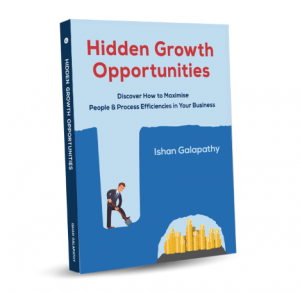My older son started university this week. I tagged along with him on his first day to walk a trip down memory lane. It was exactly 30 years ago that I went through the same process. I couldn’t help comparing systems and processes three decades apart. I expected a highly streamlined and efficient system. What did I observe?
One of the initial tasks was obtaining the student ID card. The process commenced over the weekend, even prior to getting to campus, where my son uploaded his profile photo to the ‘student portal’. He was waiting to receive a confirmation email to collect the ID. While on campus and utilising some free time we had, I suggested that we go the admin building and talk to someone – the old-fashioned way.
In the new era of self-help kiosks, QR codes and AI chat bots, it was nice to still find a few senior students in bright orange University T-shirts next to a pull-up banner that read ‘Ask Me Anything’. While it was a better experience to speak to a real person, they gave my son the same answer – wait until you receive the confirmation email.
Then, while exploring one of the learning hubs, we connected to the portal to check for the confirmation email. To my son’s dismay, the status read “photo not uploaded”. When he clicked to upload the image, it was already there. Well, definitely a technical glitch. He proceeded to escalate this issue to the person at the admin desk, not just the concierge senior student. The admin person was able to approve it manually and confirmed that it was a system error. Strangely, my son was asked to email the issue to the IT department, based overseas!! He was also told that the card will be ready in two weeks’ time and to make an appointment to pick it up. Really? Two weeks to get an ID card printed?
Finally, when he tried to book an appointment, the first available was in four weeks’ time! All this technology and online systems take four weeks to obtain an ID card in 2024! I told my son that back in 1994, I walked into the admin building with my passport (as I was an overseas student), the person behind the counter verified my details, I was asked to sit in front of a camera that was already set-up, and in less than 5 min I was given my Uni ID card. The entire process took less than 15 minutes 30 years ago, with much less technology, compared to today. What has gone wrong?
This reminds me that in our factories and offices, there’s a lot of discussions around the use of technology. We look for apps, software, scanners, anything to make our workplaces “SMART” with technology. After all, we’re in the Industry4.0 era and with its premise of connecting everything to anything, we should be able to gain a lot of efficiency, right?
Now, before we go any further, let me make it clear that I’m not anti-technology. I was in the first batch of Mechatronics Engineering graduates at the University of New South Wales – studying robotics, automation and mechanical engineering. I am all for technology and technological advances. I only have two issues with regards to technology: 1) businesses seeking technology as a silver bullet to cover for inadequate fundamental processes; 2) business failing to develop the capability to understand and utilise technology to their advantage. Give me an example I hear you ask. I’ll provide one that covers both points.
It is common for manufacturing businesses to implement technological solutions to track machine efficiencies, machine stops, throughput rates, breakdown reasons etc, the manufacturing 101 stuff. However, when I ask team leaders or operators the simple question, ‘Are you winning or losing, right now?’ many cannot answer. Reason? As much as you may find it hard to believe, the issue is lack of proper targets. When I ask operational leaders for their top three performing products, the worst downtime products, the worst waste generating products, I get blank looks. Reason? Systems aren’t configured to analyse the business that way. When I request data to help teams solve problems and improve productivity, I get told that that data is not accurate, the system doesn’t provide the level of detail needed, operators don’t use the correct reason codes or are unable to download the data in a useful manner for further analysis.
Nonetheless, there are many impressive system-generated dashboards that the team is happy to flash during project meetings, even though they don’t have a clue how to interpret what’s in front of them! It is ironic that businesses are happy to present at major public conferences on how they are advancing with Industry 4.0! Breath in, breath out and relax.
Technology is a wonderful thing and has helped us to advance as a society, industry and a factory. However, be clear that you are using it specifically, purposefully, and usefully.
Questions to ponder – is technology driving you or are you leveraging technology? Who’s the master and who’s the slave? Once again, are you winning or are you losing with technology?





